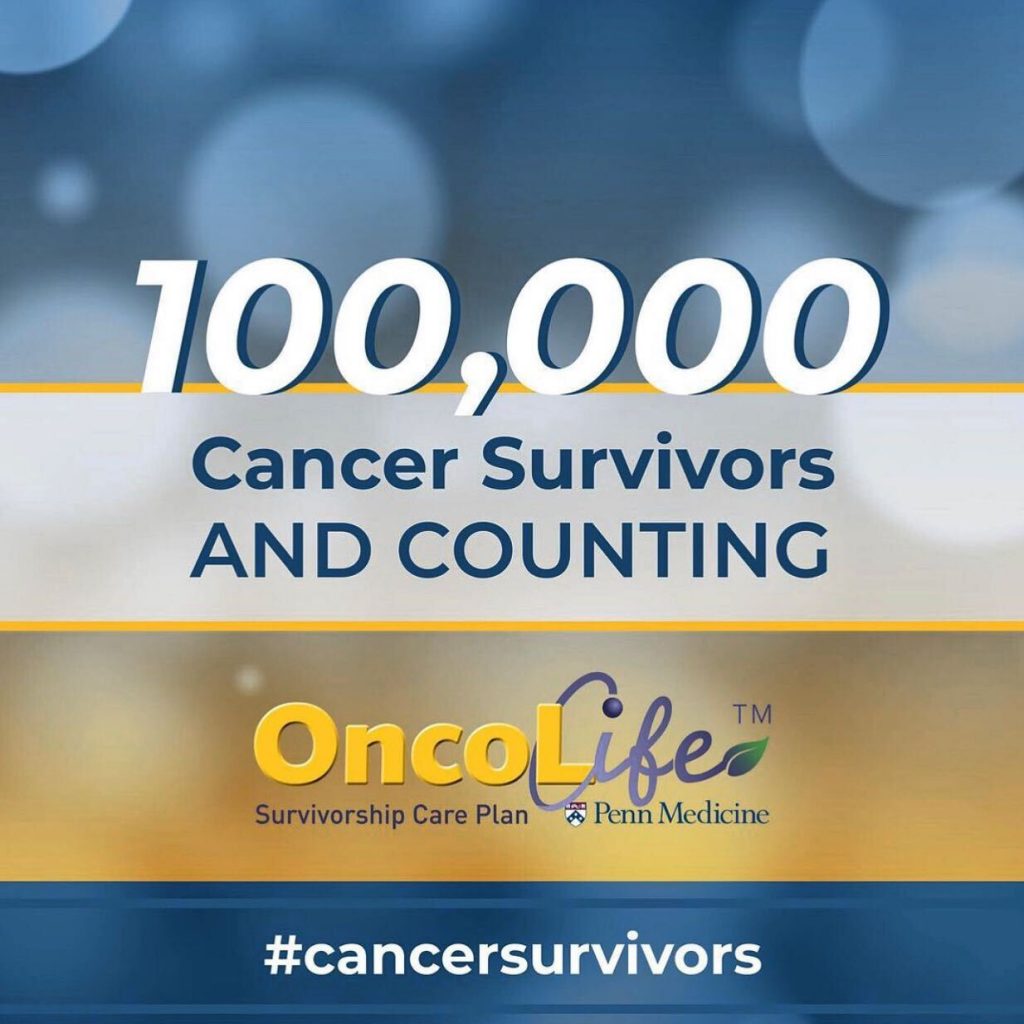
In April of 2007, OncoLink launched the OncoLife Survivorship Care Plan, a tool to create care plans for people who have survived cancer. As that tool reaches the milestone of 100,000 care plans created, OncoLink’s Editor in Chief Christine Hill-Kayser, MD, explains that we have also learned a lot from the users of the care plan.
OncoLink launched the OncoLife Survivorship Care Plan in 2007. We are a group of healthcare providers with a mission: to provide comprehensive, accessible, and accurate information for people experiencing cancer – as patients, caregivers, and, of course, survivors. The intention of OncoLife has always been to provide customized information and recommendations for people at any phase of the survivorship journey – from the moment of diagnosis, until years after active treatment. In order to build our first version, we scoured the existing literature and professional group recommendations. Fourteen years ago, and even now, the lack of data in many areas of survivorship caused us frustration. We consulted experts where data were not available, and we told our users about unknowns in the literature. Since that time, we have had the privilege of increasing knowledge about some of those unknowns through research and publication. It is thanks to our users – cancer survivors and those who care for them – that we have been able to do this. We are infinitely grateful.
In the beginning, our research focused on how we could best provide an internet-based care plan.
- What were the best ways to write content?
- How could we build the care plan?
- How could we make it available to users far and wide?
- How would it be used, not only by cancer survivors in areas of great advocacy such as breast cancer, but by groups with less public visibility and fewer people – such as lung cancer survivors?
- Would older people, potentially with less Internet access, use it?
- Would healthcare providers use it?
- Could we translate it into other languages?
The answers, over and over, were “YES!” People would use it. We learned, however, that different groups had different needs, and that young, white, highly educated, women were the most likely users. Based on these findings, we launched a version of the care plan specifically tailored for nurses and other healthcare providers to use to provide care plans for patients. This allowed access for populations less likely to create care plans for themselves. We received diverse feedback regarding information volume – many people wanted more and more information; however, others found large amounts of information overwhelming. We again added choice to the care plan – users can receive a long, comprehensive document, or can choose a more concise document that simply lists “key takeaways.” A version of the care plan is available in Spanish. We still struggle with ensuring that all populations have access to valuable information – but we have made significant progress.
Five years after our initial launch, we were able to begin learning at a more granular level about different populations of cancer survivors and their unique needs. We began to incorporate the individual experience – in the form of patient reported outcomes – into care plans. We asked survivors what bothersome late or long-term effects they might be experiencing, and their reports drove the prioritization of their care plans. We learned that fatigue, sexual changes, and neurocognitive changes are experienced by huge numbers of survivors, and are frequently of highest priority to survivors, although they are less frequently addressed by healthcare providers than many other late effects. We learned that breast cancer survivors themselves are much more likely to be dissatisfied with the appearance of their breasts after treatment than providers report. We learned that survivors who have chronic cancers – which are treatable if not curable – experience more symptoms than their counterparts whose cancers are thought to be curable. Despite this, survivors with chronic cancers are less likely to receive survivorship information and less likely to have primary care providers. We learned that <15% of cancer survivors receive dedicated survivorship information across our country, and that significant disparities remain in this distribution.
The news is not all bleak! We also learned that people who use our care plan get new information from it, and most of them feel that this information is useful and would recommend the care plan to other survivors. We learned that most users feel that the care plan improves communication with healthcare teams and that it prompts healthy behavior and lifestyle changes. We have investigated and implemented methods of embedding the care plan into health system electronic medical records to facilitate care planning for all survivors. Over time, our care plan has evolved through 11 versions – each with the goal of better providing access and information to groups of cancer survivors and caregivers who need it.
Our tool remains free and publicly accessible, and our mission is unchanged. We are grateful to our users, who have allowed us to grow and change in order to better achieve that mission. We’ve been at this for nearly 15 years, but we are nowhere near done. We look forward to the next decades of research and growth to support the cancer survivorship community with great anticipation and excitement.
Christine Hill-Kayser, MD is the Editor in Chief of Oncolink, Chief of the Pediatric Radiation Oncology Service and Associate Professor of Radiation Oncology at the University of Pennsylvania and Children’s Hospital of Philadelphia.